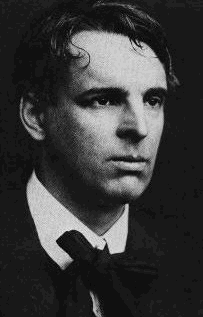“The scene was too horrible and sickening for language to describe. Human skeletons, disjointed bones, ghastly skulls and the hair of women were scattered in frightful profusion over a distance of two miles.” This was the account of a traveler passing through Mountain Meadows, in the Utah Territory, in 1859, two years after the worst massacre of American civilians in nineteenth century .
The 1850’s were a tumultuous time for the Mormon settlers, members of The Church of Jesus Christ of Latter-day Saints, in the western territories. Under the leadership of prophet Brigham Young, whom some called the “Mormon Moses”, they had escaped the persecution of the “American Gentiles”. It was in Utah that they had decided to make their stand, and they were now in a declared war against the United States of America.
In the autumn of 1857 the Fancher-Baker party, a wagon train of over 140 Arkansan men, women and children was making its way across the Utah Territory on its way to California. By all accounts it was one of the richest and best equipped wagon trains of the era, with nearly 1,000 head of cattle and several horses. The journey west had been a long one, though, and when the party reached the Salt Lake City area, its supplies ran low.
There were many children in the Fancher-Baker party. Five year-old Kit Carson Fancher and his twenty-two month old sister Tryphania were the youngest of Captain Alexander “Piney” Fancher’s nine children. As it would turn out, their infancy would be what saved their lives.
Word reached the outlying Mormon settlements that the wealthy wagon train would soon be passing through. The Mormons knew that the Fancher-Baker party would need to water its cattle and horses at Mountain Meadows, a relatively unprotected area. That is where they planned for their ambush to take place. A group of 50 men, led by local Mormon militia leaders Isaac C. Haight and John D. Lee disguised themselves as Paiute tribesmen, and set off to the hills surrounding the meadow.
In the early morning of September 7, 1857, the Mormons began to shooting at the unsuspecting Gentiles as they regrouped by the stream that ran through the meadow. Seven men in Fancher-Baker party were killed and sixteen were wounded in this first siege, but the survivors were able to quickly circle the wagons and arm themselves. They sunk the wagon wheels deep into the ground and chained them together creating a barrier. The party was able to hold off their attackers, but after four days they had no access to food or fresh water, and their ammunition was running low.
On September 11th, two Mormon militiamen approached the besieged emigrants with a white flag. They told the wagon train leaders that they had negotiated with the Indians, and that the Indians would allow them safe passage out of the valley under Mormon protection in exchange for all of their livestock. Accepting this, the emigrants were lead out of their fortification.
When the Americans left their enclosure, a signal was given and every male member of the Fancher-Baker was executed by the Mormon militia member standing by his side. The women and children were then raped and slaughtered. According to Mormon teachings, children under six years of age were considered “Innocent Blood”, and eighteen young children, including Kit and Trypahnia Fancher, were spared.
The bodies of the victims were gathered together, looted for valuables, and then left to rot on the open ground or in shallow graves. The cattle and wagon train supplies were taken to the Latter Day Saints tithing house and auctioned off. The eighteen children were taken by local Mormon families.
Two years later the children, with the exception of one girl who lived out her life amongst the Mormons, were reclaimed by the United States Army and reunited with their families. The Mormons demanded compensation for the time that the slaughter victims’ children were under their care.
Kit, who had been called “Charley” by the Mormons, and his sister Tryphania were raised by their cousin Hampton Bynum Fancher and his family in Osage, Arkansas. Five years old at the time of the massacre, he was quoted by Army investigators as saying “The men who killed my father were Indians, but when they washed their faces they were white men.”
Christopher “Kit” Carson Fancher died at only twenty years of age in the home of his cousin Hampton Fancher, and was buried in the historic Fancher-Sietz Cemetery in Osage.















